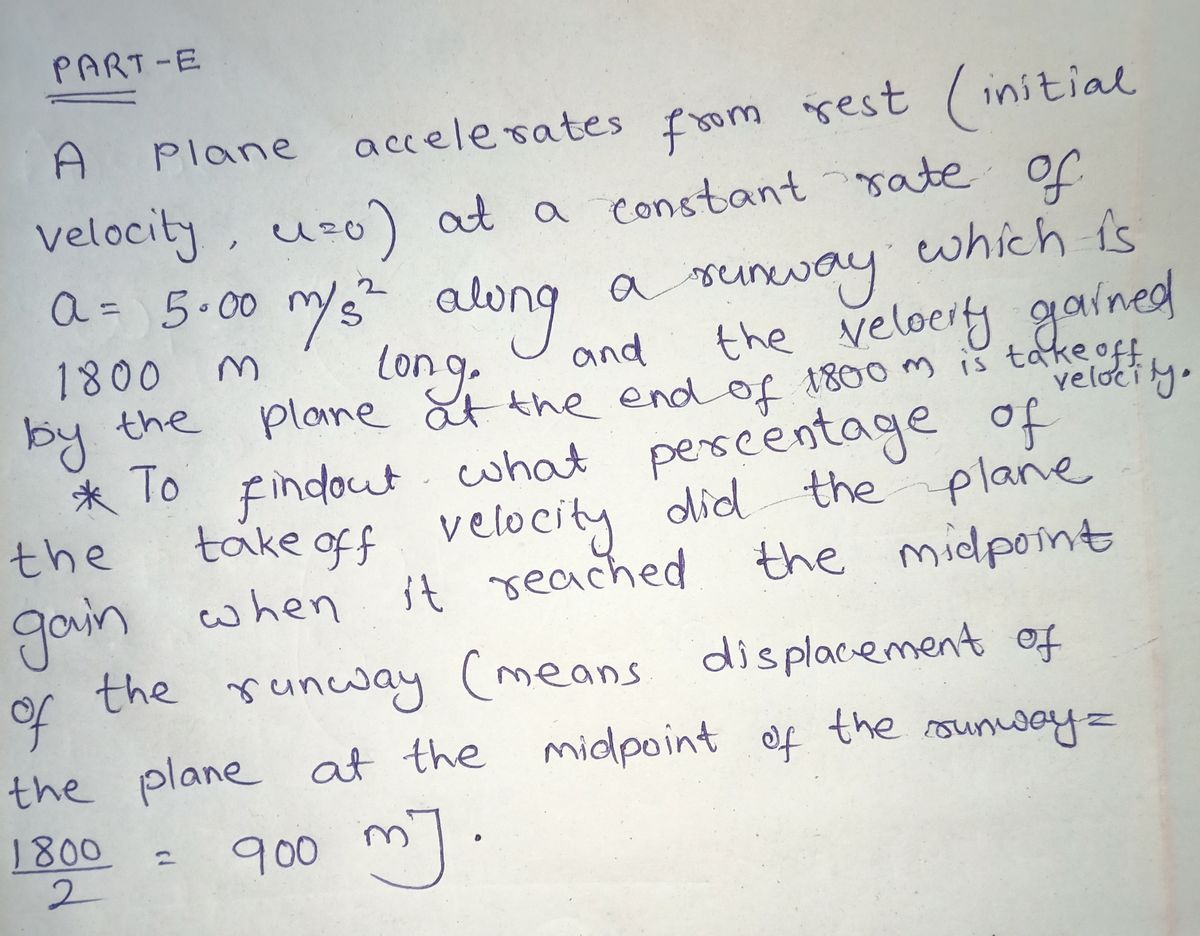To take off from the ground, an airplane must reach a sufficiently high speed. The velocity required for the takeoff, the takeoff velocity, depends on several factors, including the weight of the aircraft and the wind velocity. ▾ Part A A plane accelerates from rest at a constant rate of 5.00 m/s² along a runway that is 1800 m long. Assume that the plane reaches the required takeoff velocity at the end of the runway. What is the time tro needed to take off? Express your answer in seconds using three significant figures. ▸ View Available Hint(s) tro= 26.8 s Submit ✓ Correct If you need to use the answer from this part in subsequent parts, use the unrounded value you calculated before you rounded the answer to three significant figures. Recall that you should only round as a final step before submitting your answer. Part B Previous Answers What is the speed UTO of the plane as it takes off? Express your answer numerically in meters per second using three significant figures. ▸ View Available Hint(s) UTO 134 m/s Submit Previous Answers ✓ Correct If you need to use the answer from this part in subsequent parts, use the unrounded value you calculated before you rounded the answer to three significant figures. Recall that you should only round as a final step before submitting your answer.
Displacement, Velocity and Acceleration
In classical mechanics, kinematics deals with the motion of a particle. It deals only with the position, velocity, acceleration, and displacement of a particle. It has no concern about the source of motion.
Linear Displacement
The term "displacement" refers to when something shifts away from its original "location," and "linear" refers to a straight line. As a result, “Linear Displacement” can be described as the movement of an object in a straight line along a single axis, for example, from side to side or up and down. Non-contact sensors such as LVDTs and other linear location sensors can calculate linear displacement. Non-contact sensors such as LVDTs and other linear location sensors can calculate linear displacement. Linear displacement is usually measured in millimeters or inches and may be positive or negative.
Part E: What percentage of the takeoff velocity did the plane gain when it reached the midpoint of the runway? Express your answer numerically to the nearest percent.



Step by step
Solved in 4 steps with 4 images









